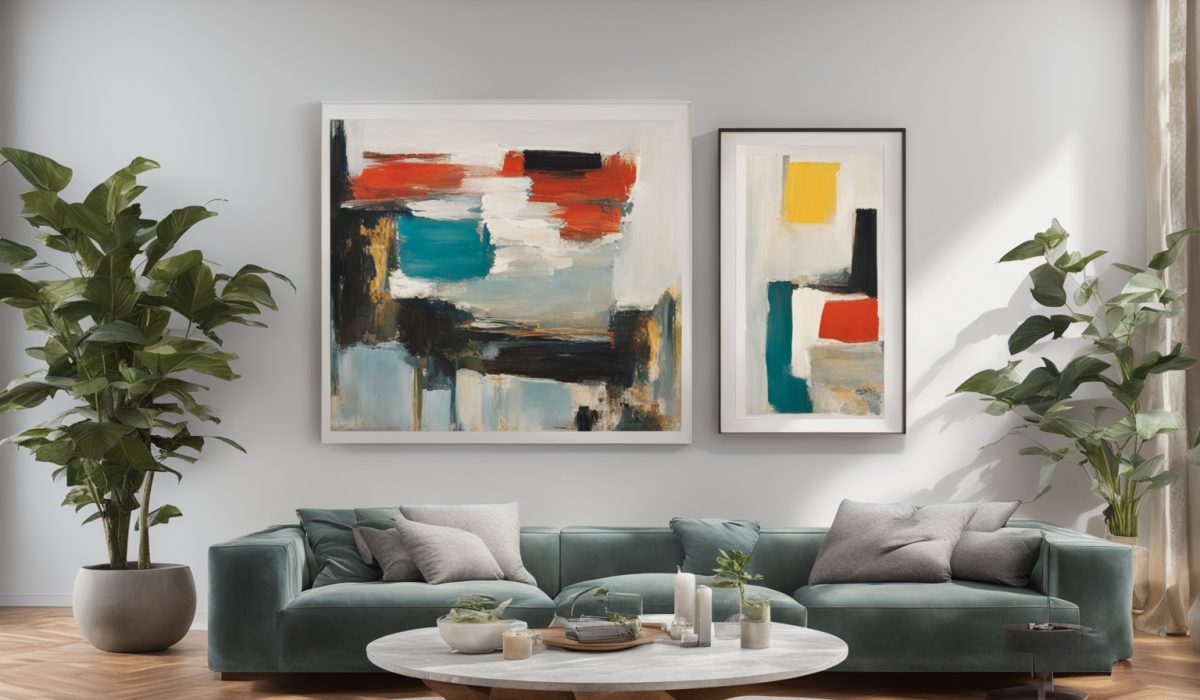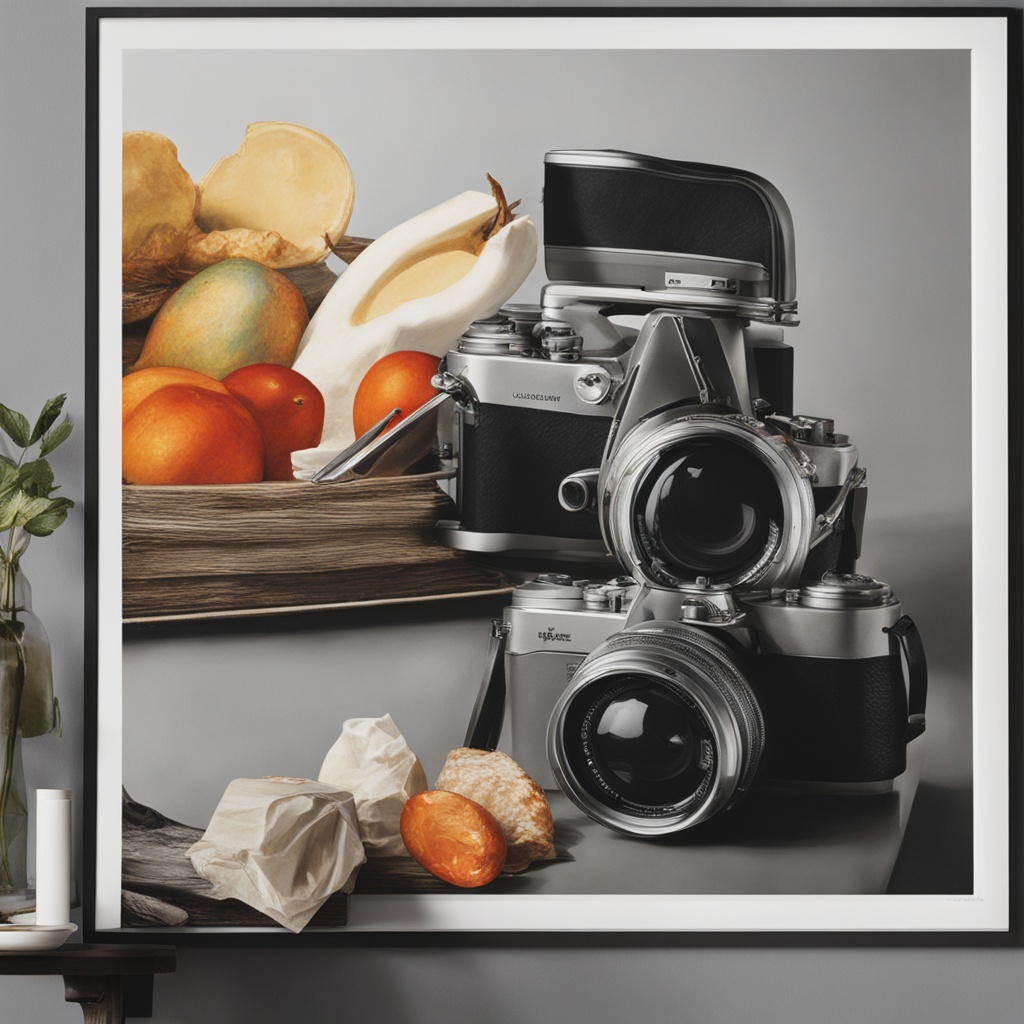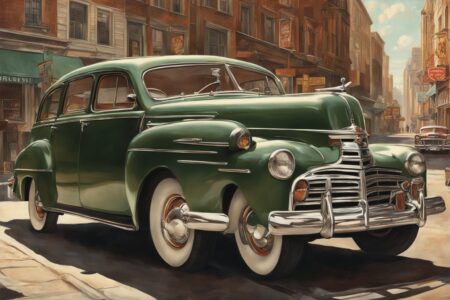Exploring Modern Art Prints: A Fresh Perspective for Collectors

Modern art prints hold a unique place in the tapestry of visual arts, with a rich history that has evolved significantly over decades. They reflect the transformative ideas of pioneering artists who have pushed the boundaries of aesthetic expression and functionality. As collectors and enthusiasts look to integrate these artworks into their environments, it’s pivotal to understand the criteria that guide the selection of the right pieces that harmonise with personal or professional spaces. Today, modern art prints continue to embrace and reflect current trends, employing a variety of techniques and mediums, while digital technology increasingly plays a vital role in their creation and reproduction. This digital influence extends to how these artworks are authenticated and valued, ensuring that collectors can invest with confidence. Care and display are also crucial elements, impacting the longevity and preservation of these prints. Looking ahead, the horizon of modern art prints appears vibrant and dynamic, promising continued innovation and relevance in the global art scene. This post will delve into each of these facets, offering a comprehensive understanding for anyone keen to explore this exciting sector of the art world.
CONTENT
Introduction to Modern Art Prints
Defining Modern Art Prints
Modern art prints are artworks printed from a variety of sources and techniques, which include lithography, screen printing, and digital printing. They encapsulate a period from the late 19th century to the present, showcasing the progressive visions of artists throughout modern history. These prints often reflect the societal, cultural, and technological shifts of their times, making them significant cultural artefacts as well as appealing decorative items.
The Appeal of Modern Art Prints
The allure of modern art prints lies in their diversity and accessibility. Artists leverage these prints to replicate their unique works affordably, allowing a broader audience to appreciate and own contemporary art. Moreover, they serve as a gateway for novice collectors to begin their art collections, providing an approachable segment of the art market that does not compromise on aesthetic value.
Collectibility and Investment
Modern art prints are not just collected for their aesthetic appeal; they are often seen as wise investments. Prints by renowned artists tend to appreciate in value over time, especially when they are limited editions or have significant historical importance. This potential for financial appreciation makes collecting modern art prints an exciting prospect combining passion and prudent investment strategy.
Evolution of Modern Art in Prints
The journey of modern art prints began in the late 19th century, coinciding with the rise of various modern art movements such as Impressionism, Expressionism, and Cubism. Artists of this era started experimenting with printmaking techniques to express new artistic theories and visions, breaking away from traditional forms. This period was characterised by an exploration of abstraction, colour theory, and non-traditional materials, which significantly altered the visual appearance and thematic complexity of artworks.
As the 20th century progressed, modern art prints saw influences from broader political, social, and cultural changes. The advent of wars, technological advancements, and changing social norms found their reflection in the artworks of the time. Mid-century modern artists like Andy Warhol and Roy Lichtenstein popularised screen printing through their bold, graphic styles and mass media-inspired subjects, which helped democratise art by linking it more closely to daily life and popular culture.
Entering the digital age, the evolution of modern art prints has embraced technological advancements, allowing artists to incorporate digital printing techniques that offer greater precision and flexibility. This phase also reintroduced and revitalised older techniques through a contemporary lens, thus enhancing both the creation and consumption of modern art prints. These ongoing innovations continue to shape the landscape of modern art, ensuring that it remains vibrant and continually adaptive to new artistic expressions and mediums.
Key Artists Who Revolutionised Modern Art Prints
Pablo Picasso: A Pioneer in Printmaking
Pablo Picasso, widely celebrated for his profound impact on modern art, is equally notable for his exploration in printmaking. Embracing techniques like etching, aquatint, and lithography, Picasso expanded the expressive possibilities of prints, using them to explore themes similar to those in his paintings and sculptures. His Vollard Suite, a series of 100 prints created in the 1930s, is particularly acclaimed for its technical proficiency and depth of emotion, making it a crucial milestone in the history of modern art prints.
Andy Warhol: The Pop Art Phenomenon
Andy Warhol’s contribution to modern art prints is monumental, particularly through his use of silkscreen printing. This technique allowed him to reproduce the images of mainstream icons and everyday objects, which became a signature aspect of his work and a defining feature of the Pop Art movement. Warhol’s approach not only challenged traditional distinctions between printed and painted art but also commented on the burgeoning consumer culture, thereby altering the perception of art within society.
Roy Lichtenstein: A New Perspective on Commercial Art
Roy Lichtenstein brought a fresh perspective to modern art prints with his bold and precise compositions reminiscent of comic strips. Utilising a process that involved stencils, Lichtenstein’s prints played a significant role in elevating commercial printing techniques to the level of fine art. His work, characterised by the use of bright colours and Ben-Day dots, underscored the visual language of mass communication and bridged the gap between high art and popular imagery, encouraging a broader dialogue about art and its purpose.

Choosing the Right Modern Art Print for Your Space
Choosing the right modern art print for your space involves considering several factors, starting with the personal aesthetics and the overall design theme of the area. It’s essential to think about what visually appeals to you and what would complement your existing decor. Modern art prints range in style from abstract expressionism to minimalism, offering a vast palette of choices. Whether you’re drawn to vibrant, dynamic pieces that make a bold statement or to more subdued, contemplative works, ensure the artwork resonates with your personal style and enhances the atmosphere you wish to create.
The size and placement of the art print are also critical in making a selection. A large, eye-catching print can serve as a focal point in a room, particularly in living or office spaces where you can afford more visual real estate. Conversely, smaller prints might be ideal for creating a gallery wall that can narrate a story through a collection of different pieces. Consider the wall space available and how the artwork fits within it. An oversized print in a small room could overwhelm the space, while a small print on a large wall might not achieve the desired impact unless thoughtfully integrated with other elements.
Finally, the lighting of the room can dramatically affect the appearance of a modern art print. Natural light can enhance the colours and details of a print during the day, but consider how different artificial lighting options might change its appearance at night. Direct light can create glare on framed pieces behind glass, so opting for indirect lighting or using spotlights can sometimes serve better. This careful consideration ensures that the art is always viewed under the best conditions, maintaining its aesthetic integrity and the mood it brings to your space.
Trends in Modern Art Prints Today
Eco-Conscious Art
In today’s art world, there’s an increasing trend towards sustainability, with artists and consumers alike seeking eco-friendly options. Modern art prints are increasingly produced using environmentally safe inks and recycled or sustainably sourced papers. This shift is not only a nod to the ecological concerns but also adds a narrative layer to the artwork, appealing to the environmentally conscious collector. Artists are more transparent about their materials and processes, aligning the art-making process with a broader commitment to sustainability.
Digital and Mixed Media Techniques
The fusion of traditional printmaking techniques with digital technologies is shaping current trends in modern art prints. Artists are experimenting with digital brushes, 3D printing, and augmented reality to create prints that offer new visual and interactive experiences. This blend of mediums expands the boundaries of printmaking and allows artists to explore new realms of creativity and expression. Such innovations are making art more accessible and engaging, attracting a younger, tech-savvy audience to the world of modern prints.
Personalised and Customisable Prints
Personalisation is becoming a significant trend in the art print market. Modern consumers value unique, customisable art pieces that speak directly to their personal experiences or aesthetic preferences. Artists and studios now offer services to customise artwork, from modifying colours to incorporating personal elements into a print’s design. This trend towards personalisation is not only about ownership but also about participation in the creative process, giving individuals a deeper connection to the artwork they display in their spaces.
Techniques and Mediums in Modern Art Printing
Modern art printing encompasses a diverse range of techniques and mediums, each contributing uniquely to the aesthetics and texture of the final print. Traditional techniques such as lithography, screen printing, and etching continue to be popular among artists who appreciate the hands-on approach and the subtle variations that these methods allow. Lithography, for instance, relies on the repulsion between oil and water to create vivid, layered images, while screen printing permits bold and vibrant colours through stencils and meshes. These classic techniques have stood the test of time, providing distinct tactile qualities that digital methods cannot replicate.
However, the digital revolution has introduced new methods like giclée prints, which use high-quality inkjet technology to create detailed and durable images. This technology allows for greater precision and control over the colours and gradients, making it ideal for reproducing digital art and photographs with high fidelity. Digital printing not only optimises the replication process but also expands creative possibilities, enabling artists to experiment with designs and patterns that would be too complex for traditional methods. It also significantly reduces the time and cost involved, making art more accessible to a broader audience.
Hybrid techniques that combine traditional and digital methods are gaining traction in the modern art scene. These hybrid approaches benefit from the authenticity of handcrafted elements and the versatility of digital enhancements. For instance, artists might start with a hand-drawn illustration, enhance it digitally, and then complete the piece with manual screen printing. Such integrations enrich the textural and visual complexity of prints, offering multi-dimensional works that appeal to diverse tastes and preferences. Through these innovative combinations, modern art printing continues to evolve, bringing together the best of both worlds to meet the changing demands of contemporary art collectors and enthusiasts.
The Impact of Digital Technology on Modern Art Prints
Enhanced Accessibility and Reach
Digital technology has immensely broadened the accessibility and reach of modern art prints, allowing artists to share their work globally with the click of a button. Online platforms and social media have become instrumental in marketing and distributing art, breaking geographical barriers that once limited artist exposure. New and emerging artists find these tools particularly beneficial as they can establish a presence without the traditional gatekeepers of art galleries and exhibitions, thus democratising the art landscape significantly.
Precision and Reproducibility
The advent of digital printing technologies has granted artists unprecedented control over the precision and quality of their prints. Techniques such as digital lithography and inkjet printing allow for exact reproduction of original artworks, maintaining every detail down to the last pixel. This precision ensures that art prints are of consistent quality, eliminating many of the variables associated with traditional printmaking. Moreover, the ability to reproduce artworks without loss of quality ensures that artists can meet rising demand while maintaining high standards.
Interactive and Multimedia Art Forms
Digital technology has not only transformed the production and distribution of art prints but also expanded the scope of what can be achieved creatively. Artists now integrate interactive elements into their print artworks, such as QR codes linking to multimedia content or augmented reality features that bring static images to life. These innovations engage viewers on multiple sensory levels, offering them a more immersive experience. This integration of technology invites a new engagement approach, transforming viewers into active participants in the art experience.
How to Authenticate and Value Modern Art Prints
Authenticating modern art prints is crucial for collectors to ensure they invest in legitimate and valuable pieces. The process often begins with verifying the provenance of the artwork, or the documented history of the piece’s ownership. Collectors should seek detailed records that trace the print back to the artist or the printing studio. Additionally, signatures, limited edition numbers, and artist’s seals are significant markers of authenticity. These elements are typically inspected closely, sometimes with the aid of magnifying tools or forensic technology, to confirm they are genuine and have not been tampered with.
The value of modern art prints is influenced by several factors beyond authenticity. The rarity of a print significantly impacts its value; limited edition prints, particularly those with fewer copies, tend to be more sought after. The condition of the print also plays a crucial role. Prints that have been well-preserved without signs of damage such as fading, tearing, or staining are valued higher. Furthermore, the reputation of the artist and the print’s historical significance can also enhance its market value, making some prints highly desirable to collectors.
For collectors, ensuring the value and authentication of a print often requires consultation with experts such as appraisers who specialise in modern art. These professionals can provide insights into the current market trends and help determine a fair price based on comparative sales and auction results. Collectors might also rely on certificates of authenticity issued by reputable galleries or artists themselves. These certificates typically include details about the print’s edition, production date, and any relevant information that could affect its value, providing a layer of security for investors and collectors in the art market.
Displaying and Caring for Modern Art Prints
Choosing the Right Frame and Mount
Selecting the appropriate frame and mount is crucial in displaying modern art prints effectively while protecting them from environmental damage. It is advisable to use archival quality materials that prevent degradation such as acid-free mats and UV-protective glass. Frames should complement both the artwork and the decor of the room without overpowering the print itself. Moreover, ensuring that the frame is properly sealed at the back will provide additional protection against dust and insects, prolonging the lifespan of the print.
Optimal Lighting Conditions
Proper lighting is essential in showcasing the beauty of modern art prints without causing damage over time. Direct sunlight should be avoided as it can lead to fading and deterioration of the print. Instead, controlled lighting such as LED lights with UV filters can provide bright, even illumination that enhances the colours and details of the artwork without the harmful effects of ultraviolet or infrared light. This setup not only highlights the artwork effectively but also contributes to its preservation.
Regular Maintenance and Care
Routine maintenance is vital for keeping modern art prints in pristine condition. This involves regular dusting with a soft, dry cloth and avoiding harsh chemical cleaners that can damage the print surface. It is also important to periodically check the artwork for signs of moisture or pest damage, especially if displayed in areas prone to high humidity. If any restoration is needed, it should be performed by professionals who specialise in art conservation to ensure that the integrity and value of the print are not compromised.
Future Outlook for Modern Art Prints in the Art World
The future of modern art prints looks promising and vibrant, driven by continuous innovations in technology and shifts in consumer preferences. As digital tools become increasingly sophisticated, artists are empowered to create complex and intricate designs that were not possible with traditional methods. This technological progression is likely to attract a broader audience, including younger viewers who value the intersection of art and technology. Additionally, the rise of online platforms and virtual galleries has made it easier for artists to reach global audiences, effectively increasing the visibility and marketability of modern art prints.
Sustainability concerns are also playing a critical role in shaping the future trends in the art print market. More artists and galleries are moving towards eco-friendly practices, including the use of sustainable materials and non-toxic inks. This shift not only addresses the environmental impact of art production but also resonates with the growing demographic of eco-conscious collectors. The demand for sustainable art is expected to continue rising, prompting further innovations in how art prints are produced and marketed.
Furthermore, the concept of personalisation and interactivity in art is becoming a significant trend that is set to expand in the coming years. Customisable and interactive art prints cater to the desire for unique, personal experiences with art, enabling individuals to connect with works in a more meaningful way. As these trends gain momentum, they will likely redefine the standards and expectations surrounding modern art prints, influencing both the creation and consumption of art across diverse audiences. These developments hint at a dynamic and inclusive future for modern art prints in the global art scene.






